Siyuan Xiang
Evaluating Deep Clustering Algorithms on Non-Categorical 3D CAD Models
Apr 29, 2024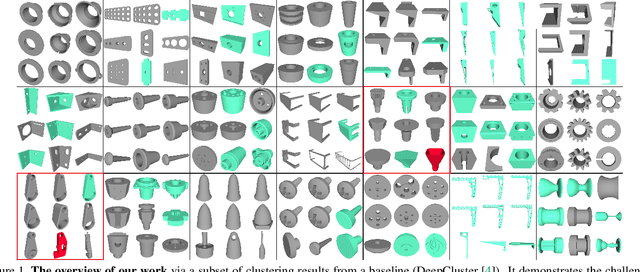
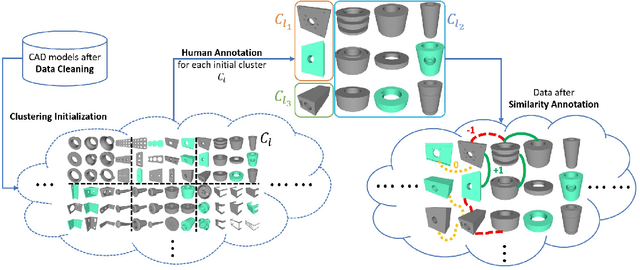
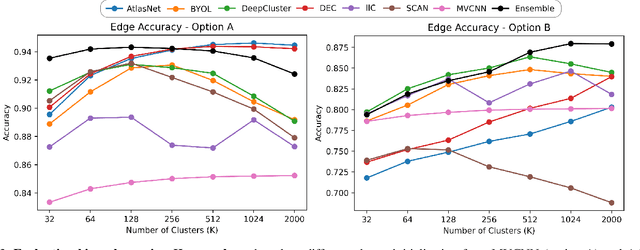

Abstract:We introduce the first work on benchmarking and evaluating deep clustering algorithms on large-scale non-categorical 3D CAD models. We first propose a workflow to allow expert mechanical engineers to efficiently annotate 252,648 carefully sampled pairwise CAD model similarities, from a subset of the ABC dataset with 22,968 shapes. Using seven baseline deep clustering methods, we then investigate the fundamental challenges of evaluating clustering methods for non-categorical data. Based on these challenges, we propose a novel and viable ensemble-based clustering comparison approach. This work is the first to directly target the underexplored area of deep clustering algorithms for 3D shapes, and we believe it will be an important building block to analyze and utilize the massive 3D shape collections that are starting to appear in deep geometric computing.
Contrastive Spatial Reasoning on Multi-View Line Drawings
Apr 27, 2021
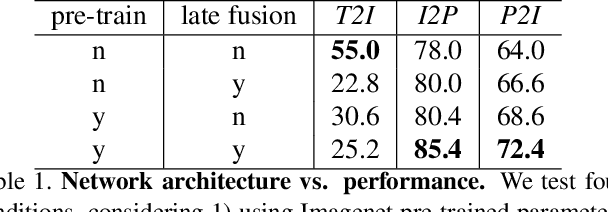
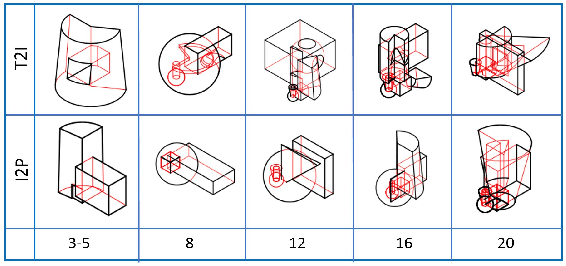

Abstract:Spatial reasoning on multi-view line drawings by state-of-the-art supervised deep networks is recently shown with puzzling low performances on the SPARE3D dataset. To study the reason behind the low performance and to further our understandings of these tasks, we design controlled experiments on both input data and network designs. Guided by the hindsight from these experiment results, we propose a simple contrastive learning approach along with other network modifications to improve the baseline performance. Our approach uses a self-supervised binary classification network to compare the line drawing differences between various views of any two similar 3D objects. It enables deep networks to effectively learn detail-sensitive yet view-invariant line drawing representations of 3D objects. Experiments show that our method could significantly increase the baseline performance in SPARE3D, while some popular self-supervised learning methods cannot.
SPARE3D: A Dataset for SPAtial REasoning on Three-View Line Drawings
Mar 31, 2020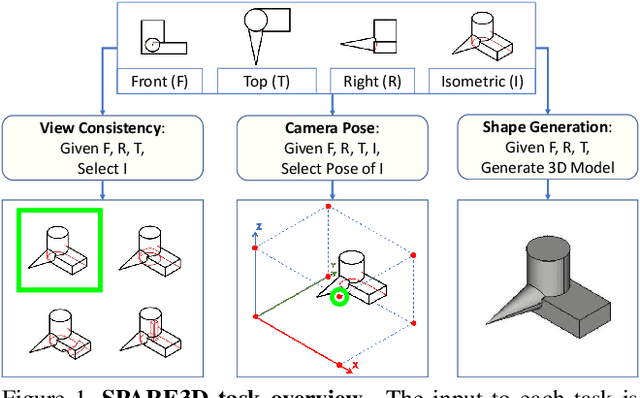

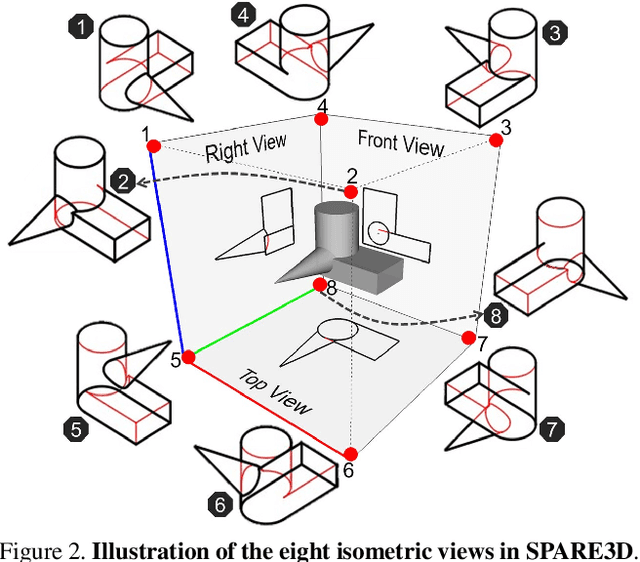

Abstract:Spatial reasoning is an important component of human intelligence. We can imagine the shapes of 3D objects and reason about their spatial relations by merely looking at their three-view line drawings in 2D, with different levels of competence. Can deep networks be trained to perform spatial reasoning tasks? How can we measure their "spatial intelligence"? To answer these questions, we present the SPARE3D dataset. Based on cognitive science and psychometrics, SPARE3D contains three types of 2D-3D reasoning tasks on view consistency, camera pose, and shape generation, with increasing difficulty. We then design a method to automatically generate a large number of challenging questions with ground truth answers for each task. They are used to provide supervision for training our baseline models using state-of-the-art architectures like ResNet. Our experiments show that although convolutional networks have achieved superhuman performance in many visual learning tasks, their spatial reasoning performance in SPARE3D is almost equal to random guesses. We hope SPARE3D can stimulate new problem formulations and network designs for spatial reasoning to empower intelligent robots to operate effectively in the 3D world via 2D sensors. The dataset and code are available at https://ai4ce.github.io/SPARE3D.
Segmentation of the Proximal Femur from MR Images using Deep Convolutional Neural Networks
Mar 20, 2018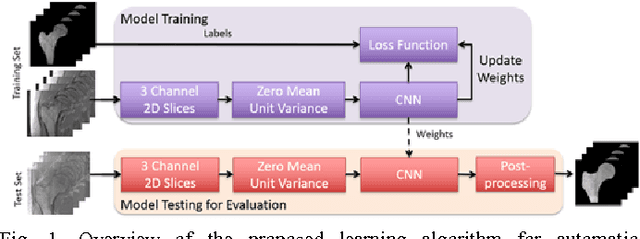
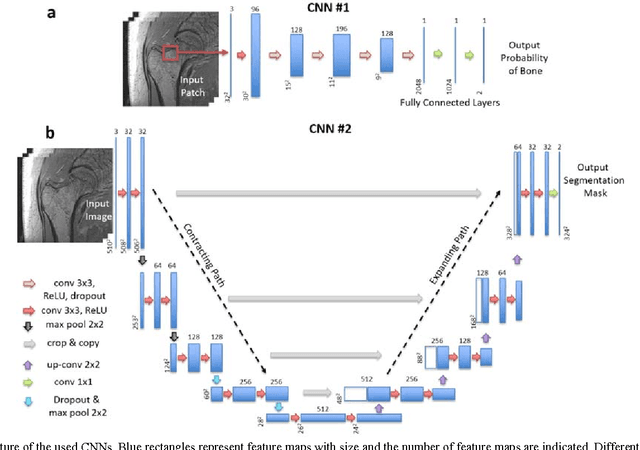
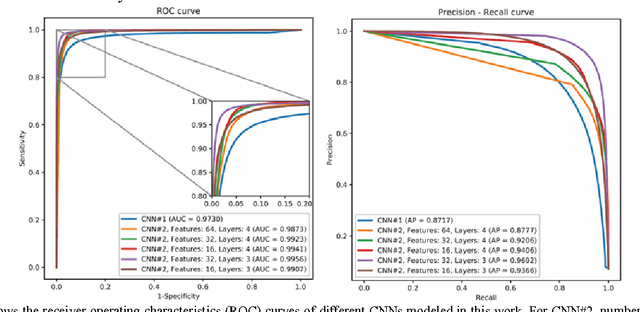

Abstract:Magnetic resonance imaging (MRI) has been proposed as a complimentary method to measure bone quality and assess fracture risk. However, manual segmentation of MR images of bone is time-consuming, limiting the use of MRI measurements in the clinical practice. The purpose of this paper is to present an automatic proximal femur segmentation method that is based on deep convolutional neural networks (CNNs). This study had institutional review board approval and written informed consent was obtained from all subjects. A dataset of volumetric structural MR images of the proximal femur from 86 subject were manually-segmented by an expert. We performed experiments by training two different CNN architectures with multiple number of initial feature maps and layers, and tested their segmentation performance against the gold standard of manual segmentations using four-fold cross-validation. Automatic segmentation of the proximal femur achieved a high dice similarity score of 0.94$\pm$0.05 with precision = 0.95$\pm$0.02, and recall = 0.94$\pm$0.08 using a CNN architecture based on 3D convolution exceeding the performance of 2D CNNs. The high segmentation accuracy provided by CNNs has the potential to help bring the use of structural MRI measurements of bone quality into clinical practice for management of osteoporosis.
 Add to Chrome
Add to Chrome Add to Firefox
Add to Firefox Add to Edge
Add to Edge